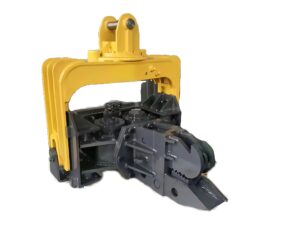
In the fields of construction, engineering and foundation construction, pile drivers, as an efficient and precise construction equipment, have become an indispensable part of modern engineering. Whether it is a construction site, bridge construction, or ground foundation construction, pile drivers can help construction workers quickly complete the piling work with their powerful driving force and precise operation. However, the correct use and operation of pile drivers require some skills and precautions to ensure work efficiency and safety. This article will provide you with a detailed pile driver operation and use guide to help you better master the use of pile drivers and understand their advantages and precautions.
1. Working principle of pile driver
Pile driver is a device that uses heavy machinery to drive and quickly drive the pile foot into the ground through a rotating pile hammer. Its core working principle is to drive the rotating pile hammer through a large engine, and use the weight and impact force of the pile hammer to drive the pile foot into the hard ground. The piling process usually includes two parts: the rotation of the pile hammer and the impact of the pile foot.
Pile hammer rotation: The pile hammer of the pile driver rotates rapidly through the drive system to form a circular motion.
Pile foot impact: When the pile hammer rotates to a specific angle, the pile foot quickly impacts the ground through the deceleration device to form the pile foot.
The whole process depends on the weight and speed of the pile hammer, as well as the hardness and humidity of the ground. The performance of the pile driver directly determines the depth and stability of the pile foot.
2. The main components of the pile driver
The core components of the pile driver include the following parts:
Drive system: The engine and deceleration device responsible for driving the pile hammer to rotate.
Pile hammer: The core component of pile driving, usually made of steel pipe or carbon steel, equipped with a wear-resistant layer.
Deceleration device: The rotation speed of the pile hammer is controlled by the deceleration system to avoid hitting the ground too quickly.
Ground fixing device: Includes tracks or wheels to ensure that the pile driver can operate stably under different ground conditions.
Operation console: Includes joysticks and display screens to control the operation of the pile driver.
Water spray system: Used to enhance the bonding force between the pile foot and the ground and improve the stability of the pile foot.
3. Operation steps of pile driver
Preparation
Ensure that the pile driver is in a stable working state and check whether the oil, water, electricity and other liquids are sufficient.
Select the appropriate pile hammer and pile driving position, and select the appropriate pile length and pile diameter according to the ground conditions.
Confirm that the surrounding environment is safe to avoid interference from personnel or other equipment.
Start the pile driver
Press the start button or press the joystick to start the drive system of the pile driver.
Select the appropriate rotation speed, usually adjusting the speed according to the hardness of the ground and the length of the pile.
Adjust the position of the pile hammer
Adjust the height and angle of the pile hammer by adjusting the handwheel or joystick to ensure that the pile hammer is perpendicular to the ground.
Pay attention to the wear of the pile hammer to avoid excessive wear.
Pile driving process
Decelerate to an appropriate rotation speed to ensure that the equipment will not be damaged when the pile hammer hits the ground.
Press the launch button or press the launch key on the console to start piling.
Observe the state of the pile foot when it hits and ensure that the depth of the pile foot meets the requirements.
Stop piling
Stop piling immediately after the pile foot reaches the designed depth to avoid damage to the pile hammer due to excessive driving.
Check whether the pile foot is stable and ensure that the pile foot forms a good contact with the ground.
Cleaning and sorting
Clean up the gravel and debris on the ground to ensure that the subsequent piling work proceeds smoothly.
Check whether the various parts of the pile driver are damaged or abnormal, and deal with the problem in time.
4. Precautions for pile drivers
Avoid excessive piling
Excessive piling will cause serious wear of the pile hammer and affect subsequent use. It is recommended to pile accurately according to design requirements.
Pay attention to ground humidity
Avoid piling on hard or wet ground to prevent the pile foot from sinking or the pile hammer from getting stuck.
Regular maintenance
Regularly check whether the engine, reduction device and pile hammer are operating normally to ensure the long-term and stable use of the pile driver.
Wear safety equipment
When operating the pile driver, it is recommended to wear safety equipment such as earmuffs and goggles to prevent injuries from splashing.
Comply with safety regulations
Pile driver operators need to receive professional training to ensure safe operation.
5. Advantages of pile drivers
High efficiency
Pile drivers can complete a large number of pile foot driving work in a short time, greatly improving construction efficiency.
High precision
By adjusting the angle and height of the pile hammer, the pile driver can achieve accurate driving of the pile foot and reduce material waste.
Wide applicability
The pile driver can be used under different ground conditions and is suitable for a variety of geological conditions such as hard soil, soft soil, and rock.
Cost reduction
Compared with manual piling, the pile driver can greatly reduce construction costs and improve construction efficiency.
Reduce environmental impact
The operation of the pile driver is relatively quiet and will not cause much damage to the surrounding environment.
6. Application scenarios of pile drivers
Construction sites
Used for deep pile driving of building structures to ensure building stability.
Bridge construction
Used for driving pile feet in important parts such as bridge tower bases and slope protection piles.
Ground foundation construction
Used for driving pile feet for infrastructure such as roads and power line poles.
Marine engineering
Used for piling work in scenarios such as offshore platforms and seabed pile feet.
Summary
As an efficient and precise construction equipment, pile drivers play an important role in modern engineering. Through proper operation and maintenance, pile drivers can not only improve construction efficiency, but also reduce costs and reduce environmental impact. For construction workers and project managers, it is very important to master the use and precautions of pile drivers.
The Wenbo pile driver we produce is made of Q355 manganese plate.
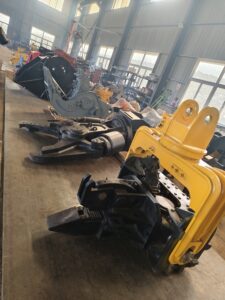
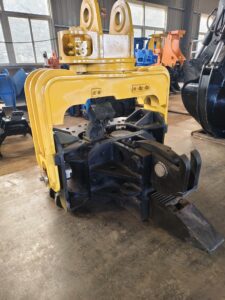
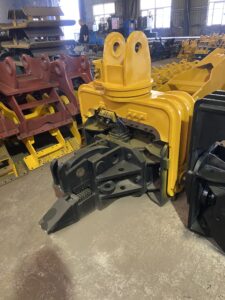
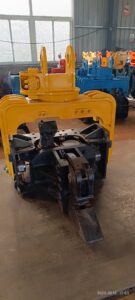
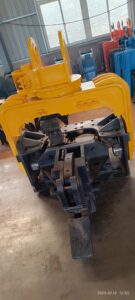
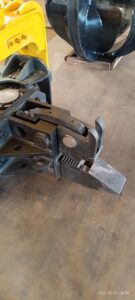
Product features:
1. The box adopts an open structure to ensure the pressure balance in the box and stable heat dissipation.
2. The bearings are of German brand with stable performance.
3. Imported hydraulic motors are used, with stable effects.
4. High-performance imported shock-absorbing rubber blocks are used, with long service life.
5. The material of the clamp is imported wear-resistant plate with high wear resistance. The clamp cylinder has strong thrust and pressure maintenance, which is stable and reliable, ensuring that the pile body does not fall loose and ensuring construction safety.
6. The tooth plate is made of wear-resistant plate, which has strong wear resistance and is more durable.
In addition, it can complete the work by cooperating with different clamps, such as driving and pulling out cement piles, steel sheet piles, log piles, and H-shaped steel. Our clamp is for steel sheet piles.
If you are interested in our pile drivers, please feel free to contact us for more details! 💪
